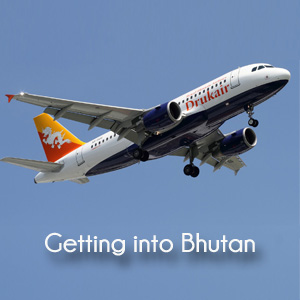Physically, Bhutan can be divided into three zones: Alpine Zone (4000m and above) with no forest cover; the Temperate Zone (2000 to 4000m) with conifer or broadleaf forests; and the Subtropical Zone (150m to 2000m) with Tropical or Subtropical vegetation. Because of its wide altitudinal and climatic range, the flora and fauna is diverse and rich.
Forest types in Bhutan are Fir Forests, Mixed Conifer Forest, Blue Pine Forest, Chirpine Forest, Broadleaf mixed with Conifer, Upland Hardwood Forest, Lowland Hardwood Forest, and Tropical Lowland Forests. Almost 60% of the plant species that is found in the eastern Himalayan region can be found in Bhutan as well.
Bhutan boasts of about 300 species of medicinal plants and about 46 species of rhododendrons. Some common sights for the visitors are the magnolias, junipers, orchids of varied hues, gentian, medicinal plants, daphne, giant rhubarb, the blue poppy which is the national flower and tropical trees such as pine and oaks.
A wide range of animal could also be found frequenting the jungles of Bhutan. Some high altitude species are the snow leopards, the Bengal tigers that are found at altitude ranging 3000 to 4000 meters, the red panda, the gorals and the langurs, the Himalayan black bear and sambars, the wild pigs and the barking deer, the blue sheep and the musk deer. In the tropical forests of Southern Bhutan one can come across the clouded leopards, the one horned rhinoceros, elephants, golden langur that is unique to Bhutan, the water buffaloes and the swamp deer.
Bhutan also has a great variety of bird species. It is recognized as an area of high biological diversity and is known as the East Himalayan ‘hot spot’ situated as it is at the hub of 221 global endemic bird areas. The recorded number of bird species is over 670 and there are chances that this number could still go up.
In addition, 57% of Bhutan’s globally threatened birds and 90% of the country’s restricted rare birds are dependent on forests. Bhutan has about 415 resident bird species. These inhabitant birds are altitudinal refugees, moving up and down the mountains depending upon the seasons and weather conditions. Of about 50 species of birds that migrate in winters are the buntings, waders and ducks, thrushes and the birds of prey. Some 40 species are partial migrants and they include species such as swifts, cuckoos, the bee-eaters, fly catchers and the warblers.
Bhutan is also home to about 16 bird species that are endangered worldwide. These include the White bellied heron, Pallas Fish eagle, Blyth’s King fisher to name a few. Phobjikha valley in Wangdue Phodrang and Bomdeling in Trashi Yangtse are also two important places in Bhutan that is visited by the endangered Black Necked Crane.
As one of the ten global hotspots Bhutan is all set to preserve and protect the rich environment through environmental organizations.
Some of the proactive organizations are the:
- National Environmental Commission
- Royal society for protection of nature clubs throughout the country.
- Department of Forestry Services.
- Nature Conservation Department
- Bhutan Trust Fund.
- Donor Organization.
- Association of Bhutanese Tour Operators.

Bhutan Travel Info
Bhutan Travel tips, Daily Tourist Tariff, Bhutan Visa Information, Tour payment regarding your tour booking to Bhutan. Click on the link below to know more.
Learn more >>

Tour Packages
Travel to Bhutan with Sachock Bhutan Travels. We, at Sachock offers Cultural tours, Trekking Tours including the World's toughest Trek Snowmen Trek and colorful Festival tours of Bhutan.
Learn more >>

Getting into Bhutan
Travelling to Bhutan can be accessible by Air, to Paro(the only international airport in Bhutan connecting with Indian Cities, Nepal, Bangaldesh, Thailand & Singapore) & Road through Southern border towns of Phuentsholing, Gelephug and Samdrup Jongkhar.
Learn more >>

Sachock Bhutan Travels, P.O Box No: 1304, Karma Khangzang, Thimphu : Bhutan
Phone # (+975) 77177717 / 77210443 : Tele-Fax (+975) 2 333 881
Email: [email protected] / www.SachockBhutanTravels.com
Sachock Bhutan Travels, Copyright © 2025. All Rights Reserved.






